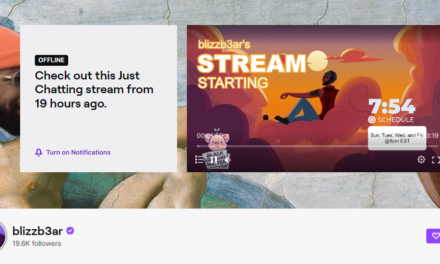What keywords are driving traffic to your site? Once on your site, what content do visitors consume? Which content drives traffic most efficiently through the sales funnel? Which content does the best job of building engagement? Which calls to action do the best job of conversion? These questions are just the tip of the iceberg for content owners who are increasingly challenged—by their boards, bosses, and clients—to show real results for their efforts.
Fundamentally, of course, what content creators most want to know is if something is working. Given the varied platforms they have at their disposal these days—and the varied ways that consumers are interacting with their content—they want to know what’s working across multiple channels. But despite a broad proliferation of content analytics tools and the vast measurability of digital content, the answer remains maddeningly elusive for many.
The Content Analytics Year in Review
“The exponential growth in both technology and data in 2018 put marketers in a very difficult position to try to keep up,” says John Fernandez, VP of revenue marketing at Contently. “We saw many marketers this year throw their hands up in the air and realize they are unable to do everything.” That wasn’t necessarily all bad though, he states. Faced with an overwhelming array of options, Fernandez says that marketers “have become much better about ruthlessly focusing on only their primary and secondary KPIs [key performance indicators], instead of trying to measure everything under the sun.” There’s a significant digital divide between the giants in the industry (e.g., Netflix, Amazon) and smaller organizations struggling to keep up with both the proliferation and costs of analytics platforms and options.
Data privacy scandals—as well as new regulations, such as the General Data Protection Regulation (GDPR)—also have some marketers feeling understandably nervous about the type of data they gather and what they do with it. But there’s one use case that has increased in popularity, holding real value for the marketers that can master the modeling: attribution. Marketers are moving beyond activity (how many people came to my site?) to attribution (which content views/consumption contributed to revenue and to what degree?). Attribution modeling allows marketers to very finely drill down into the various touchpoints that caused their audiences to take some specific actions—actions tied directly to sales.
Steve Kurniawan is responsible for content marketing and growth strategy for Nine Peaks, a digital marketing agency. He says that 2018 saw growing interest in marketing attribution models that have increased dramatically when compared to 2017. “Marketers, in general, and content marketers have realized the importance of analytics, and even some of our new clients during 2018 are already familiar with attributions and were asking for implementations.” This, Kurniawan says, “is mainly due to the heavy buzz for attribution we have received, but I think another huge factor is the fact that it’s now easier than ever to implement attribution and analyze the data. Just a few years ago, it was a job exclusively for the savvy digital analyst, but now virtually anyone can do it, given enough effort.”
The amount of available content analysis options isn’t likely to diminish any time soon. Still, says Fernandez, going into 2019, marketers will continue to leverage their growing understanding of what’s most important for them to focus on. Technologies such as machine learning are emerging to help them do that most efficiently, says Nicholas Cumins, general manager of SAP marketing cloud with SAP Customer Experience.
A Look Ahead at Content Analytics
Marketers were sidetracked a bit in 2018 by the impact of the GDPR. In 2019, there will be opportunities for marketers to leverage emerging technologies, such as machine learning, to gain more value from the data they’re able to capture. “The majority of marketing organizations haven’t operationalized machine learning; however, many are in the planning or implementation stages or are running a proof of concept,” says Cumins. On the vendor side, he says, machine learning applications are being “designed to address specific business scenarios such as customer retention, lead conversion, product purchase, etc.” Machine learning will make it easier for marketers to use sophisticated data analytics without the dependency on statisticians and data scientists, says Cumins. “We will see marketing organizations use machine learning to help them identify the best audiences and to deliver relevant customer experiences, helping to drive marketing optimization.”
There will be other technological impacts, Cumins states: “The increasing diversity of marketing channels used to interact with customers, such as new social media platforms, IoT [Internet of Things], wearables, etc., has driven the need for holistic measurement and analysis. Multichannel attribution is no longer an experiment, as validated by acquisitions of Bizible and BrightFunnel in 2018, Abakus and Visual IQ in 2017.” Multichannel measurement should not be a standalone solution, according to Cumins, but an integrated part of enterprise marketing technology.
“In 2019, multichannel measurement will link the impact of all marketing (online and offline) touchpoints to revenue for known customers. Attribution will close the loop in the marketing processes, [and] with the ability to run simulations [and] perform A/B testing to validate performance changes, it will automatically optimize marketing investments,” Cumins says.
Google, which maintains a dominant presence in the world of analytics through its Google Analytics offering, will also continue to have an impact on how content is analyzed, says Kirsten Bowers, an internet marketing strategist at Sixth City Marketing. It is, she says, a great way to analyze how content is performing. With Google’s new mobile-first index, though, Bowers says the landscape will be changing. “Previously, many sites had a separate mobile version, with less or different content than the desktop version, which will now have a negative impact on both traffic and leads thanks to the Google update,” she says. In 2019, Bowers states, content creators will continue to rely on Google Analytics as a key form of measurement—especially in mobile settings.
In 2019, the race will be on to find the most efficient solution to analyze content across multiple settings and devices to quantify the elusive multichannel or omnichannel experience. As massive budgets continue to be spent on content development, answering increasingly more sophisticated questions about how consumers engage with, respond to, and make purchase decisions based on content consumption will remain top of mind for marketers.






